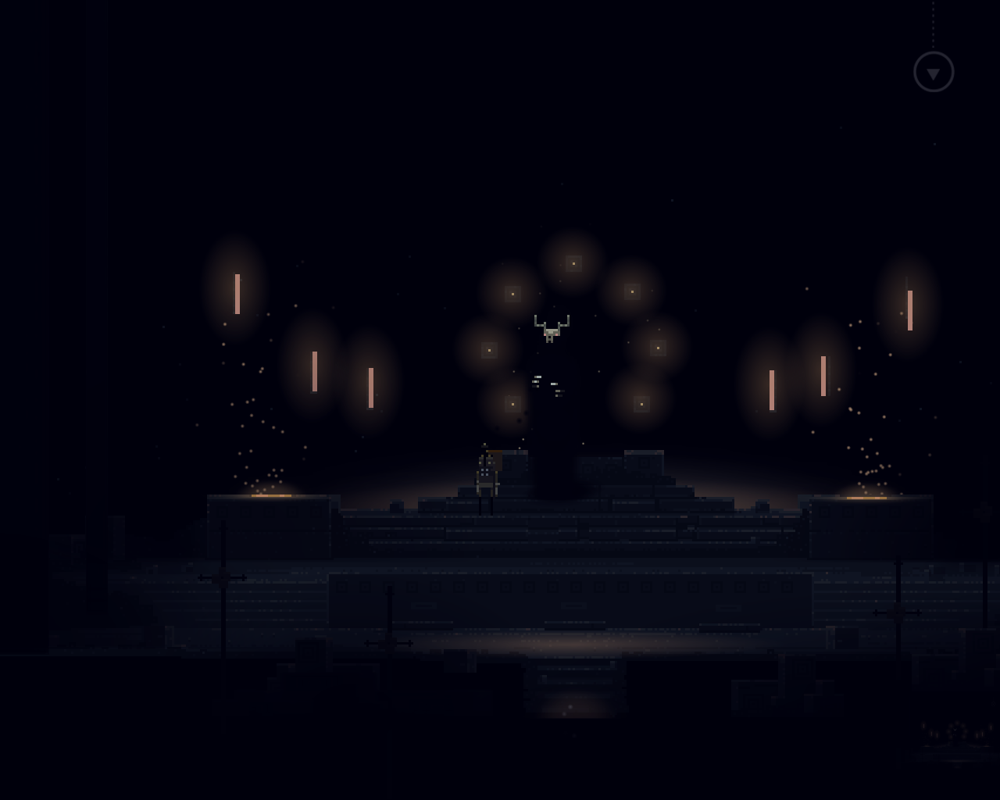There are some games throughout history that are literally named after the genre of sword and sorcery. This is one of them; they can't escape by adding an extra 'w' to the title.
Originally made for mobile phones, the game was ported to PC in 2012, with the touch screen controls and other mobile features modified. The player controls a heroine named the Scythian, although the stick figure graphics make it impossible to discern anyone's gender until the Scythian starts grunting during the fight scenes. The Scythian is on some sort of quest to uncover a magical book called the Megatome that takes her to the Caucasus Mountains. After achieving this objective early on, the Scythian then has to face the consequences of her actions.
As the EP in the title indicates, the game is heavily inspired by music, specifically the music of Canadian musician Jim Guthrie, and the image of a vinyl record appears when starting or closing the game. The game is broken down into four sessions and the player is encouraged to play one session, then leave for a bit before coming back for the next one. The final session is even tied to the calendar and can only be accessed during the day of a full moon, although it is possible to work around this. The game also has the rare feature of linking to the player's Twitter account, if there is one, so the player can post updates on progress to social media, and the dialogue and narration in the game take the form of typical "Twitter-ese"; e.g., "We got the gold trigon. We are so awesome."
All this should make clear that this isn't a typical take on the genre. Although there is combat, which is reminiscent of combat in the Quest for Glory series, the game is much more concerned with an introspective mood. Most of the gameplay is more like a simplistic point-and-click adventure game as the Scythian wanders through the woods solving puzzles while wind blows, rain drops, and sheep baa.
It does evoke some traditional aspects of the genre, though. The climax of session 1 involves the Scythian entering a tomb within Mingi Taw and hacking the Megatome from the grasp of a horned figure's bony hands, then being chased all the way outside by a invincible spectral figure (later identified as the "Gogolithic Mass"). It's wonderfully intense and calls back to several classic stories of thieves going where they shouldn't and either dying or very narrowly escaping with their lives. The game also renders objects that are supposed to be otherworldly in razor-sharp high-definition, which when juxtaposed with the blocky, pixelated look of everything else creates an unsettling mood.
It's maybe not the most fun game to play, particularly for a traditionalist, but it's an interesting and oddly memorable one, especially if one can get past the hipster/art game elements involved.
Supplemental reading: Liane the Wayfarer, by Jack Vance






No comments:
Post a Comment